Religious Liberty and the American Supreme Court
Religious Liberty and the American Supreme Court
The Essential Cases and Documents
Updated Edition
Vincent Phillip Muoz
ROWMAN & LITTLEFIELD
Lanham Boulder New York London
Published by Rowman & Littlefield
A wholly owned subsidiary of The Rowman & Littlefield Publishing Group, Inc.
4501 Forbes Boulevard, Suite 200, Lanham, Maryland 20706
www.rowman.com
Unit A, Whitacre Mews, 26-34 Stannary Street, London SE11 4AB
Copyright 2013 by Rowman & Littlefield Publishers, Inc.
Chapters 65 and 66 to paperback edition 2015 by Rowman & Littlefield
All rights reserved . No part of this book may be reproduced in any form or by any electronic or mechanical means, including information storage and retrieval systems, without written permission from the publisher, except by a reviewer who may quote passages in a review.
British Library Cataloguing in Publication Information Available
Library of Congress Cataloging-in-Publication Data
Muoz, Vincent Phillip, author.
Religious liberty and the American Supreme Court : the essential cases and documents / Vincent Phillip Munoz. Updated edition.
pages cm
Includes bibliographical references and index.
ISBN 978-1-4422-0828-5 (pbk.) ISBN 978-1-4422-5032-1 (electronic) 1. Freedom of religionUnited States. 2. Church and stateUnited States. I. Title.
KF4783.M86 2015
342.730852dc23
2015001962
 The paper used in this publication meets the minimum requirements of American National Standard for Information SciencesPermanence of Paper for Printed Library Materials, ANSI/NISO Z39.48-1992.
The paper used in this publication meets the minimum requirements of American National Standard for Information SciencesPermanence of Paper for Printed Library Materials, ANSI/NISO Z39.48-1992.
Printed in the United States of America
For my students
The establishment of Civil and Religious Liberty was the Motive which induced me to the Field; the object is attained, and it now remains to be my earnest wish and prayer, that the Citizens of the United Sates would make a wise and virtuous use of the blessings, placed before them.
George Washington
Letter to the Reformed German Congregation of New York
November 27, 1783
Every government degenerates when trusted to the rulers of the people alone. The people themselves, therefore, are its only safe depositories. And to render them safe, their minds must be improved to a certain degree.
Thomas Jefferson
Notes on the State of Virginia , 1782
A popular Government, without popular information, or the means of acquiring it, is but a Prologue to a Farce or a Tragedy; or, perhaps both. Knowledge will forever govern ignorance: And a people who mean to be their own Governors, must arm themselves with the power which knowledge gives.
James Madison
Letter to W. T. Barry
August, 4, 1822
Notes on the Text
This volume is intended for citizens and students who seek to understand the U.S. Supreme Courts church-state jurisprudence. The cases and documents presented comprise the most important legal materials pertaining to the First Amendments protection of religious liberty. The included Supreme Court cases are presented chronologically, which, it is hoped, will help the reader grasp how various First Amendment church-state doctrines were developed and have changed over time.
In presenting cases chronologically, this volume breaks from usual casebook practice of grouping cases by subject matter. This arrangement, while perhaps more useful to the practicing lawyer, hides the fact that many cases do not neatly fit into to one subject area alone. Equally importantly, trends and doctrines in Establishment Clause cases alter and influence free exercise decision making (and vice versa). How decisions under one clause constrain and influence decisions under the other (or ought to) can easily be overlooked if cases are presented thematically instead of chronologically. Moreover, thematic arrangement obscures the larger narrative arc of the Courts development of doctrine. This volume is intended to help readers discover not only what the law is but how it came to be what it is. That aim, we believe, is best served by the chronological arrangement of cases. To aid students and teachers interested in specific church-state subject matters, however, a supplemental table of contents by subject matter has also been provided.
The cases in this volume are excerpted. Every effort has been made to include the most important doctrinal, analytical, philosophical, and historical passages in each excerpted opinion. Nonetheless, the dedicated student who wishes a more complete understanding of a case or opinion ought to read its full text. Lost in the excerpting process, in particular, is how justices rely on and interpret precedents. For purposes of space, case citations have been removed unless a citation is needed to identify the location of a quotation or was deemed of particular importance.
Case citations refer to the United States Reports , the official record of the proceedings of the U.S. Supreme Court. Under the commonly accepted citation protocol, Wallace v. Jaffree , 472 U.S. 38 (1985) indicates that the case Wallace v. Jaffree can be found in volume 472 of the United States Reports starting on page 38 and that the case was decided in the year 1985. Citations within an opinion to precedents often have the following format: Lemon v. Kurtzman , 403 U.S. 602, 612613 (1971). This citation indicates a reference to pages 612613 of Lemon v. Kurtzman . In the footnote in the following quote, 330 U.S., at 16 indicates a reference to page 16 of volume 330 of the United States Reports . For the three most recent cases in this volume, page numbers to the United States Reports were unavailable at the time of publication. As noted on the first pages of those case excerpts, the citation and page numbers used refer to the Supreme Court Reporter .
For all but the three most recent cases, page references within the opinions text refer to the original pagination in the United States Reports . In the following example from Justice Rehnquists dissent in Wallace v. Jaffree , page 92 of the United States Reports begins with the words between church and State.
This language from Reynolds , a case involving the Free Exercise Clause of the First Amendment rather than the Establishment Clause, quoted from Thomas Jeffersons letter to the Danbury Baptist Association the phrase I contemplate with sovereign reverence that act of the whole American people which declared that their legislature should make no law respecting an establishment of religion, or prohibiting the free exercise thereof, thus building a wall of separation [92] between church and State.
It is impossible to build sound constitutional doctrine upon a mistaken understanding of constitutional history, but unfortunately the Establishment Clause has been expressly freighted with Jeffersons misleading metaphor for nearly 40 years.
Reynolds is the only authority cited as direct precedent for the wall of separation theory. 330 U.S., at 16. Reynolds is truly inapt; it dealt with a Mormons Free Exercise Clause challenge to a federal polygamy law.
For the most part, footnotes in the justices opinions have been eliminated. In cases where original footnotes are present, the note number is the original number used in the opinion. In the example above, note 1 was the first note in Justice Rehnquists opinion. Depending on the excerpt, the first note of an opinion may not start with the number 1 and numbers may not proceed sequentially. Clarifying material added to text and footnotes by the editor appears in brackets. Editorial footnotes added to the cases are marked by asterisks.
Acknowledgments
Several friends and colleagues helped me complete this book. Don Drakeman and Matthew Frank provided especially thoughtful comments on an early draft of the introduction and made helpful suggestions about which cases and documents to include. Rick Garnett, Michael Uhlmann, and Allen Hertzke also provided helpful suggestions for the table of contents. Professors Uhlmann and Hertzke additionally tested drafts of the manuscript in their church-state seminars, helping me to improve the excerpts for classroom use. Thank you to them and their students. Two of my best students, Matthew Shapanka and Colin Littlefield, made valuable contributions throughout the research, excerpting, and editing processes, as did Jennifer Smith, my assistant at Notre Dames Tocqueville Program for Inquiry into Religion and Public Life. Jon Sisk at Roman & Littlefield provided the insight, encouragement, and patience needed to see this project through to the end. Margaret Cabaniss produced the exceptionally thorough index in a remarkably short amount of time. Thank you to her and to her three little assistants, John, Thomas, and Stephen. Miguel Buckenmeyer helped with the books cover design.
Next page


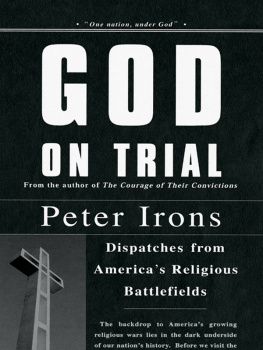
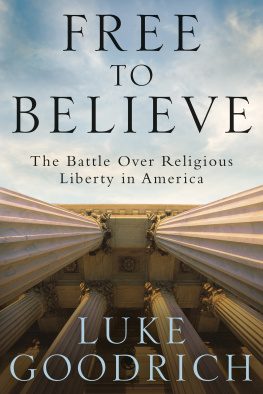
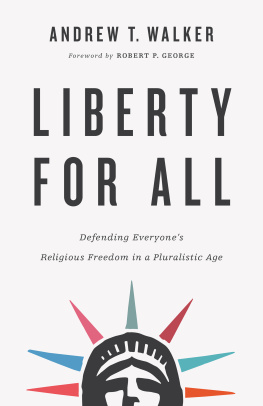
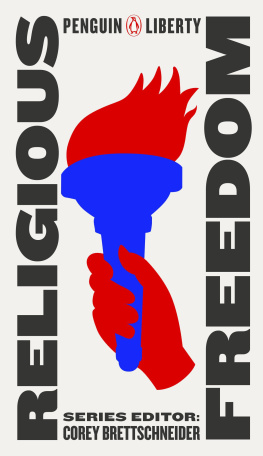
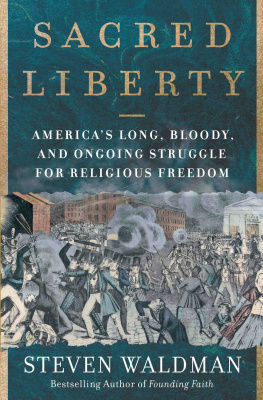
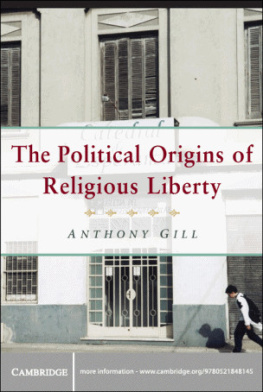
 The paper used in this publication meets the minimum requirements of American National Standard for Information SciencesPermanence of Paper for Printed Library Materials, ANSI/NISO Z39.48-1992.
The paper used in this publication meets the minimum requirements of American National Standard for Information SciencesPermanence of Paper for Printed Library Materials, ANSI/NISO Z39.48-1992.